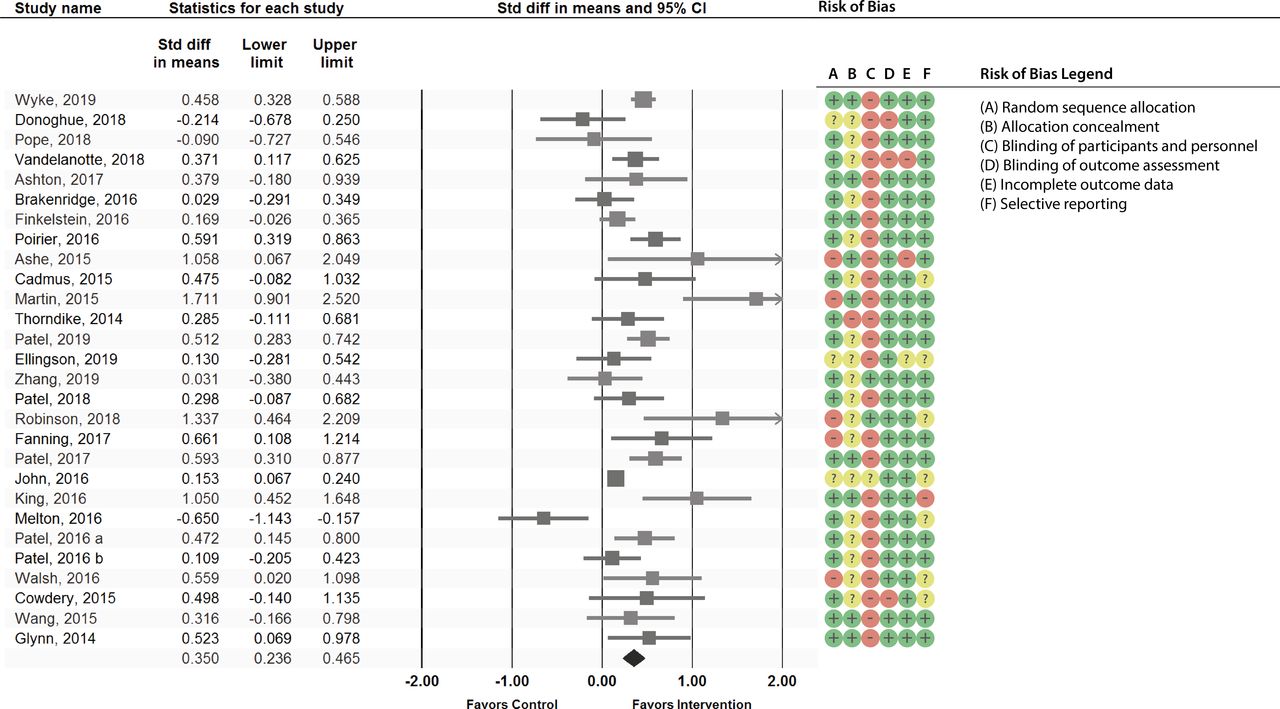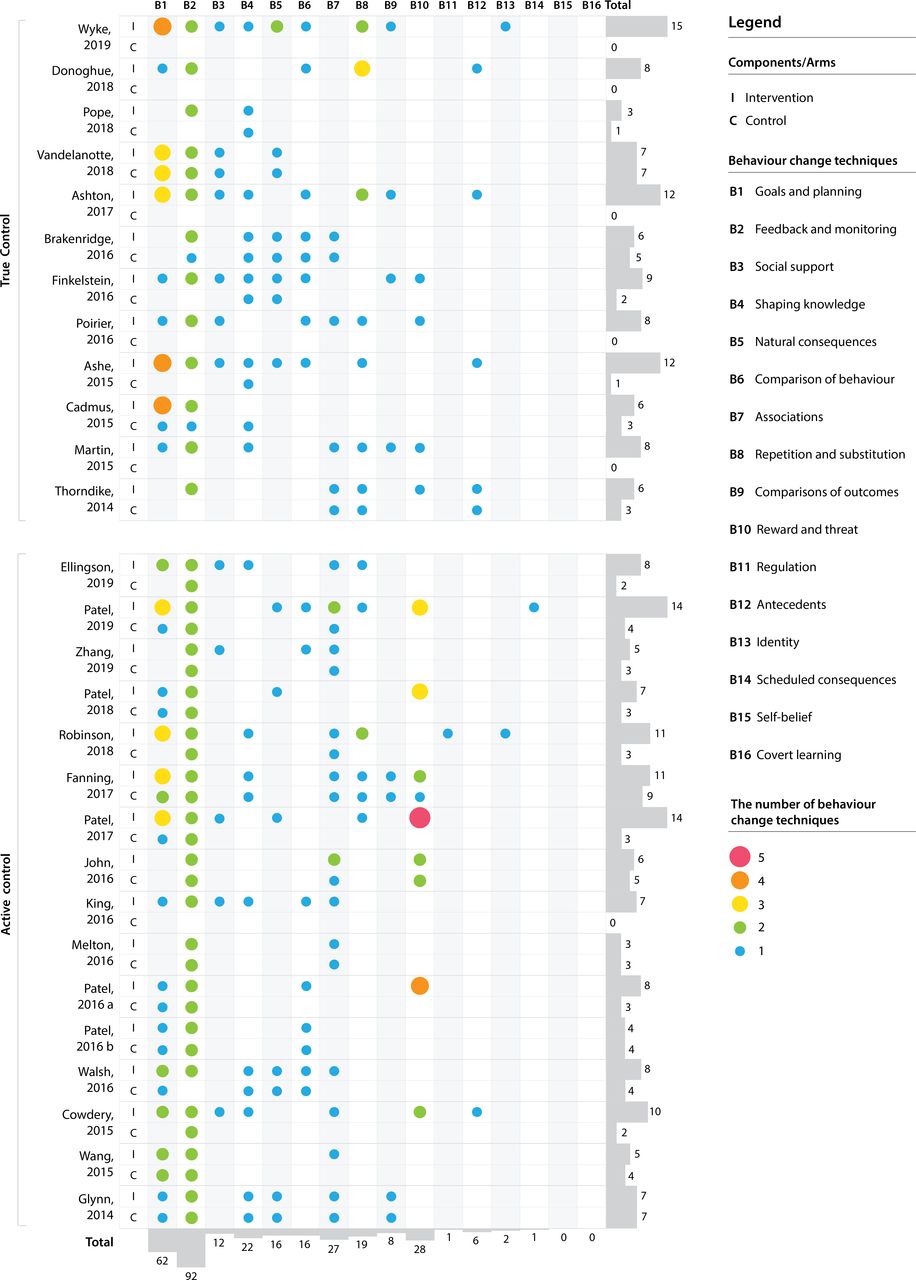Part of the BJSM”s #KnowledgeTranslation blog series
Mobile fitness applications (apps) and activity trackers are now more popular than ever. Sensors in smartphones and activity trackers enable users to easily monitor their physical activity by allowing for automated and continuous self-monitoring and feedback. This way, users are able to track their physical activity, such as their number of steps or distance walked, effortlessly and continuously throughout time.
Past reviews focused on older technologies without automated and continuous self-monitoring and feedback, such as pedometers that required users to keep a paper diary of their number of steps, or accelerometers that had to be connected to a computer to upload exercise data.
In our review we aimed to determine the effect of the newer trackers and apps currently being used by consumers (with automated and continuous self-monitoring and feedback) in increasing physical activity in healthy adults.
Methods
We conducted a systematic review, searching Pubmed and 7 additional databases for randomised controlled trials in adults (18–65 years old) without chronic illness, testing a mobile app or an activity tracker.
We combined physical activity measures (daily step counts, minutes per week of moderate-to-vigorous physical activity, weekly days exercised, minutes per week of total physical activity, metabolic equivalents) in a meta-analysis. For ease of interpretation we converted the summary effect into step counts from standardised difference in means.
Results
We included 28 studies in the meta-analysis, published between 2014 and 2019, encompassing 7454 adults.
We found that after a mean follow-up period of 13 weeks (length of the trials ranged from 2 to 40 weeks), app and tracker users were more active than control groups, by an average of 1850 additional steps per day (Figure 1).

Figure 1 Forest plot of effect sizes and 95% confidence intervals (CIs) representing the effect of interventions involving mobile applications or activity trackers in increasing physical activity (random effects model) with risk of bias assessment. The meta-analysis showed a positive effect on physical activity favouring interventions including smartphone apps or activity trackers (SDM 0.350, 95% CI 0.236 to 0.465, p<0.0001, I2=69%, T2=0.051), corresponding to an increase of 1850 steps per day (95% CI 1247 to 2457). Note: size of squares is proportional to study sample size. SDM, standardised difference in means.
The interventions included a variety of smartphone apps (including Moves and Accupedo-Pro) and activity trackers (Fitbit being the most common), as well as other components, such as email, human involvement via phone calls or face-to-face meetings, and text messaging.
Interventions included different behaviour change techniques, most commonly from the ‘feedback and monitoring’ and ‘goals and planning’ groups, where goal-setting was the most frequent (Figure 2).

Figure 2 Mapping of BCTs in intervention and control groups of included studies. The most common BCTs present in the intervention were from the ‘feedback and monitoring’ group (B2, 60 BCTs across all 30 studies), followed by ‘goals and planning’ (B1, 47 BCTs across 22 studies) and ‘reward and threat’ (B10, 25 BCTs in 11 studies). BCT, behaviour change technique.
We also found that the apps and trackers were most effective when they included some sort of personalisation (for instance, the ability to personalise goals, or receive personalised feedback or content), and when text-messaging was used in addition to the app or tracker.
The key take-home messages:
Interventions using apps or trackers seem to be effective in promoting physical activity and may lead to an average increase of 1850 steps per day, an amount that is known to have significant clinical impact in reducing mortality risk. The apps and trackers seem to work best when complemented by personalisation or text-messaging.
The take-away message for healthcare practitioners and fitness professionals is that they may consider prescribing apps or trackers to their patients who want to become more physically active, given their potential to improve health outcomes.
Author and Affiliations:
Liliana Laranjo | MD MPH PhD Research Fellow | The University of Sydney
References: